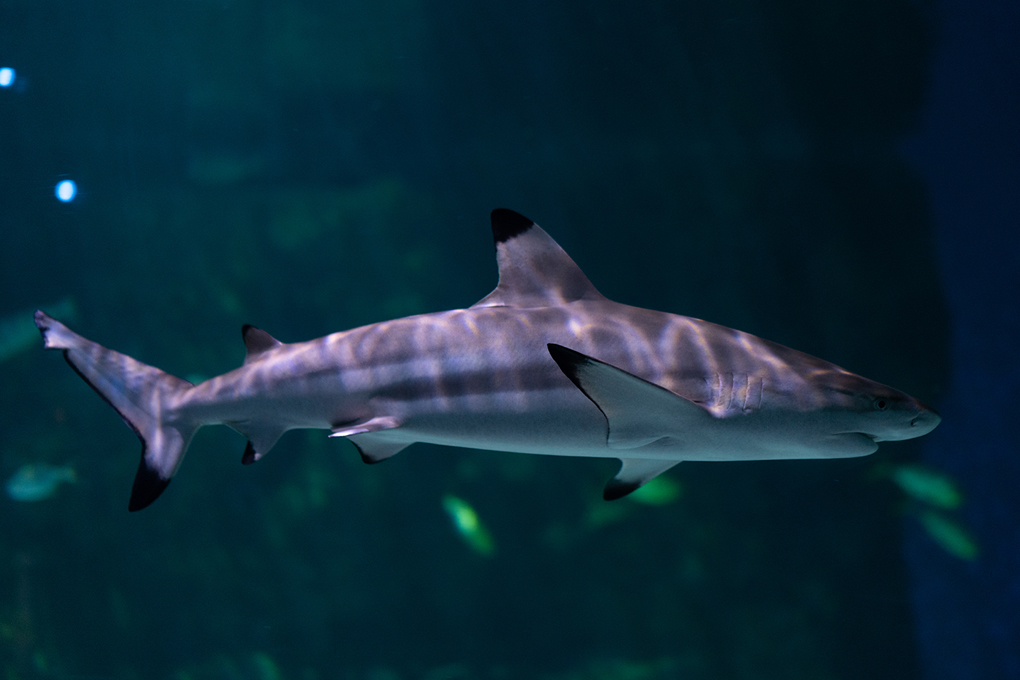Carcharinhus melanopterus
Fast Facts
- Identified by the black tips of their fins
- These sharks must swim continuously to force water over the gills and avoid sinking. A shark could rest on the ocean floor if the current is strong enough or the shark must actively pump water itself.
- Blacktip reef sharks give live birth.


Range
Indo-Pacific from the Red Sea to the Hawaiian Islands, and the Tuamotu Archipelago

Habitat
Shallow waters on and near coral reefs, occasionally brackish waters

Size
Up to 6 feet

Nutrition
Reef fishes, stingrays, crustaceans, cephalopods, and mollusks
Characteristics
Blacktip reef sharks are a smaller species of shark with a short, bluntly-rounded snout. Their dorsal and caudal fins are black tipped, giving the shark its name. They are brownish-gray on the dorsal side and white on the ventral side: a pattern known as countershading which allows the shark to sneak up on unsuspecting prey. The Blacktip reef shark is commonly confused with the Blacktip shark which is larger and found in the open ocean away from coral reefs.
Behavior
This is a socially complex species that performs a variety of group behaviors such as herding schools of fish against the shore and feeding on them. Small groups of Blacktip Reef Sharks often hunt down schools of fish, working together to corral the fish into a tight ball, and then they attack the trapped prey. This feeding frenzy often results in the Blacktips leaping out of the water to catch the prey that are trying to escape.
Reproduction
Blacktip reef sharks are viviparous, or live-bearing sharks, which is very uncommon. They reach sexual maturity at eight to nine years. Mating usually takes place between late winter and early summer. A female was documented fertilizing her own egg without a male present. This female’s baby was genetically tested, and it was confirmed that all genetic material came from the mother. She was not a hermaphrodite, nor was she storing sperm. It was determined to be a form of parthenogenesis, the process that allows females of some species to produce offspring without sperm.

